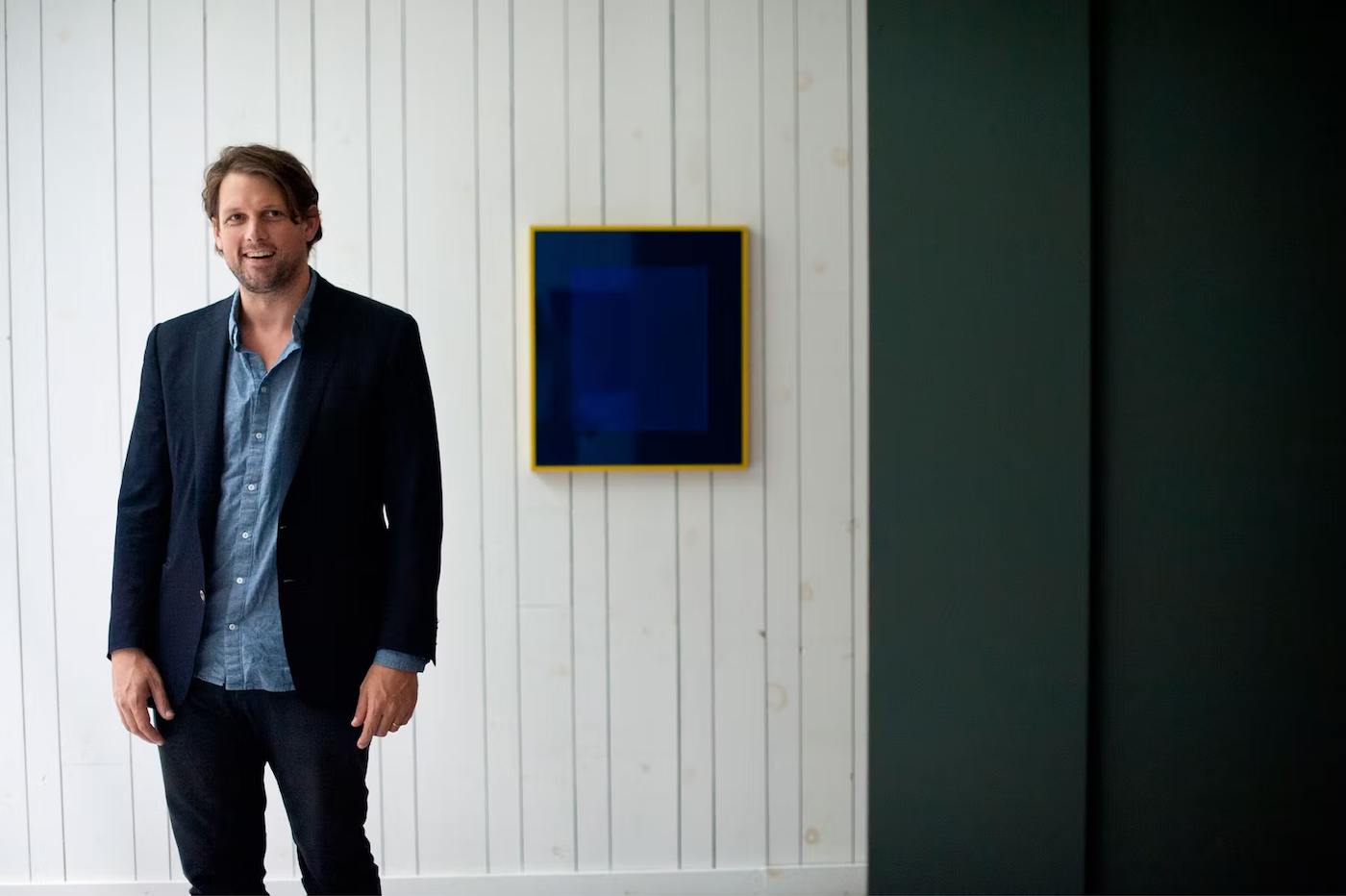
December 11, 2013
Download as PDF
View on W Magazine
“People are always trying to figure us out,” Brendan Dugan says good–naturedly over coffee one afternoon in downtown Manhattan, up the block from Karma, the multifaceted store out of which he operates. “They say, ‘Wait, this is crazy. You design artist books, and you have a bookstore, but you also have a gallery. I don’t get it.’ ”
Neither does he, really. Dugan, 34, occupies a unique position in the art world: he’s a trained graphic designer whose crisp, idiosyncratic sensibility has earned him an A-list client roster that includes galleries like Gagosian and Hauser & Wirth, as well as art magazines and boutique art-book publishers. But he is perhaps most admired by artists, who seek him out to help with their most unusual projects. When the neo-Pop maestro Rob Pruitt needed a new catalog, he turned to Dugan, who created special editions with different cover treatments: One came sandwiched between slabs of marble, and another featured a mirror with a rolled-up dollar bill and a razor blade taped to it. At the launch event, in Dugan’s former space in the West Village, Pruitt signed copies—in the nude, save for a strategically positioned toy panda. For Life Size, the artist Sam Falls simply handed over hundreds of his photographs and let Dugan do his thing. “I haven’t been able to wrap my mind around it yet,” Falls says approvingly of the result.
Dugan also trades in publications he did not design. “We tried to find all the Blinky Palermo books that exist and all the books Wallace Berman designed covers for,” he says, alluding to Karma’s highly esoteric inventory. “The bookstore became this kind of research library.” Those tomes inform his designs—and inspire his clients. Selling them seems to be a secondary concern.
A few years ago some of Dugan’s artist friends began showing their work at Karma, and suddenly Dugan was an art dealer. One month, a star like Laura Owens might have a mini-exhibition; the next, it’s a couple of assistants from Dan Colen’s studio. “An artist might have an idea that they wouldn’t do at their gallery because maybe it’s more experimental,” explains Dugan, who opened a second, seasonal space in 2012 in Amagansett, in order to be closer to the collectors who flock to Long Island’s Hamptons in the summer. “I like that we have a lot of different things happening,” he says. “I think that’s how people live, in a weird way. But you know, it’s interesting some days—trying to figure out what, exactly, you’re doing.”



